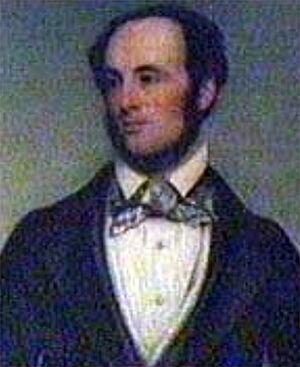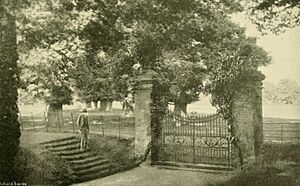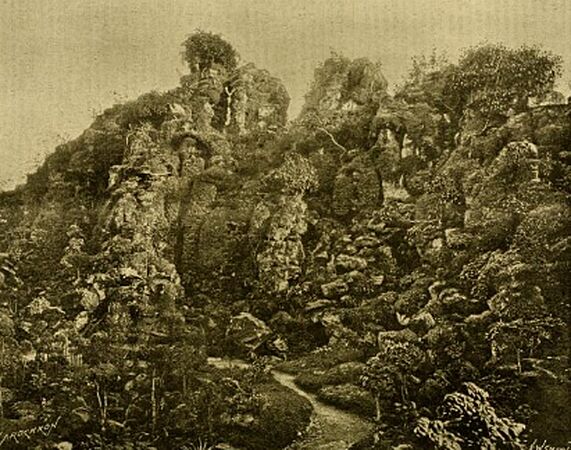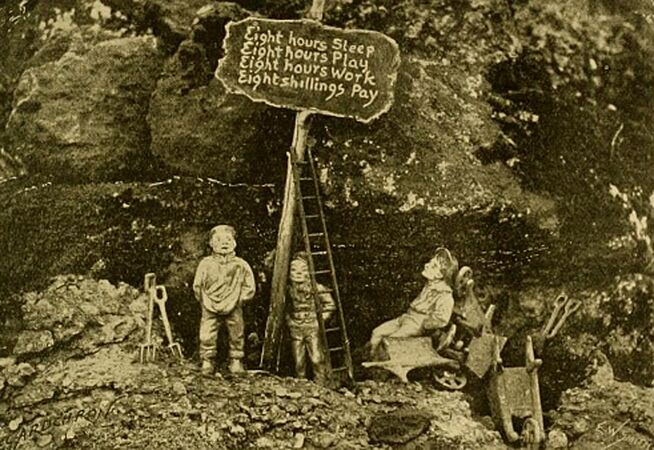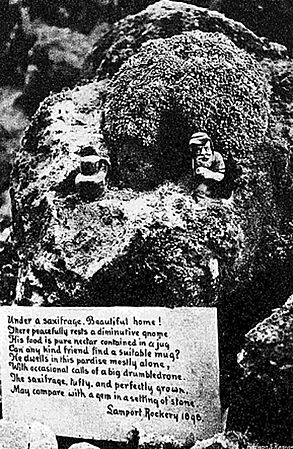Lamport Hall facts for kids
Quick facts for kids Lamport Hall |
|
|---|---|
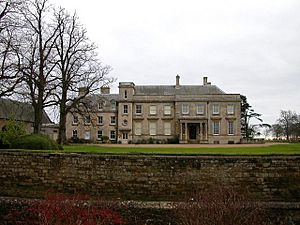 |
|
| Type | Country House |
| Location | Lamport |
| OS grid reference | SP 75883 74504 |
| Area | West Northamptonshire |
| Built | 1655–1741 |
| Rebuilt | 1842 |
|
Listed Building – Grade I
|
|
| Official name: Lamport Hall | |
| Designated | 2 November 1954 |
| Reference no. | 1054842 |
| Lua error in Module:Location_map at line 420: attempt to index field 'wikibase' (a nil value). | |
Lamport Hall is a beautiful old country house located in Lamport, Northamptonshire, England. It started as a Tudor manor house but now looks more like a grand classical building. The Hall is famous for its amazing collection of old books, paintings, and furniture. You can visit Lamport Hall to explore its history and see its unique treasures, including a special room called The High Room with a stunning ceiling. It also has a library filled with very old books from the 1500s.
Lamport Hall was the home of the Isham family for a very long time, from 1560 until 1976. One famous member of the family, Sir Charles Isham, 10th Baronet, is known for starting the trend of garden gnomes in the United Kingdom. He brought some small clay figures from Germany in the 1840s, and they became very popular.
Contents
The History of Lamport Hall
The story of Lamport Hall began in 1568. A rich wool merchant named John Isham built a manor house on the land. His grandson, also named John, became the first baronet in 1627. A baronet is a special title, like a knight, that can be passed down in a family. This John Isham made the house much bigger. However, only a small part of his building, in the stable area, remains today.
The main part of the house you see now was built by Sir Justinian Isham. In 1655, he hired an architect named John Webb to design a large two-story home. More parts were added to the house in 1741, including the south-west and north sides. The grand gates at the main road were built in 1824.
In 1842, the south-east side of the house was rebuilt. Later, Sir Charles Isham added a new front entrance with a porch to the north-west side. This became the main way to enter the Hall and was finished in 1862. A tall tower was also built around the same time.
By the 1950s, the house needed a lot of repairs. The owner at that time, Sir Gyles Isham, worked hard to fix it up. He opened the ground floor to the public in 1974 so people could visit. When he passed away in 1976, he left Lamport Hall and everything inside it to the Lamport Hall Preservation Trust. This trust still takes care of the Hall and its beautiful gardens today.
In 2021, the trust offered musicians a chance to perform for free at an outdoor event. They explained it was meant to be a showcase for amateur musicians and later apologized for any misunderstanding.
Sir Charles Isham and His Garden Gnomes
Charles Isham became the owner of Lamport Hall in 1846 when he was about 26 years old. He loved gardening, and his garden was often written about in magazines of the time. People were especially interested in his unique rockery, which you can still see today.
In 1872, a gardening magazine wrote about the rockery:
This rockwork is the great feature of the gardening at Lamport, and is a striking evidence of Sir Charles Isham's fine taste and wonderful patience. The whole is his own handiwork, and has occupied a period of two and twenty years to bring it to its present high perfection.
This means Sir Charles built the rockery himself over 22 years!
Another magazine, Gardeners Chronicle, wrote in 1897:
It may be said here that every stone of which the structure is composed has been placed in position by the owner himself... He has done the planting and no other person has anything to do with it unless by his instruction... We should have been none the wiser had Sir Charles not explained that he had chiseled a small hole through the centre of the stone, and put soil into it, so that the roots of the plant could by that means reach the ground through the stone.
No plant that grows quickly is a favorite for this structure. Everything is in miniature... It is full of plant curiosities. A stunted individual that refuses to make free growth is just the kind of plant that is sought. Dwarf Conifers form one of its features, and Sir Charles has been at some trouble to procure them. Some of them are known to be upwards of seventy years old, and have not made more than 3 feet natural growth.
This shows how much care Sir Charles put into his rockery, even drilling holes in stones for plants! He liked small, slow-growing plants, and some of his dwarf trees were over 70 years old but still very tiny.
This special rockery was also known for the gnomes that lived there. A magazine called The Garden described them:
The caves and recesses with the fairy miners are another distinctive feature. These miniature figures (only a few inches high) are in various attitudes and in strange association with the dwarf trees. In one section they are on strike, hands in pockets, with a general aspect of disdain and indignation.
Imagine tiny gnomes looking like they're on strike! Photos of the rockery and gnomes from that time are shown in the gallery below.
Only one of the original gnomes from this amazing rockery still exists today. It is on display at Lamport Hall. A picture of a copy of this gnome is also shown below.
The Hall's Library
In 1867, many rare and old books of Elizabethan prose and poetry were discovered in an attic at Lamport Hall. These included first editions of John Milton's famous poems, Paradise Lost and Paradise Regained. These books were bound in sheepskin, a type of leather. This discovery was very exciting for book lovers!
Image gallery: The Rockery and Gnomes in 1897
See also
- Isham baronets



